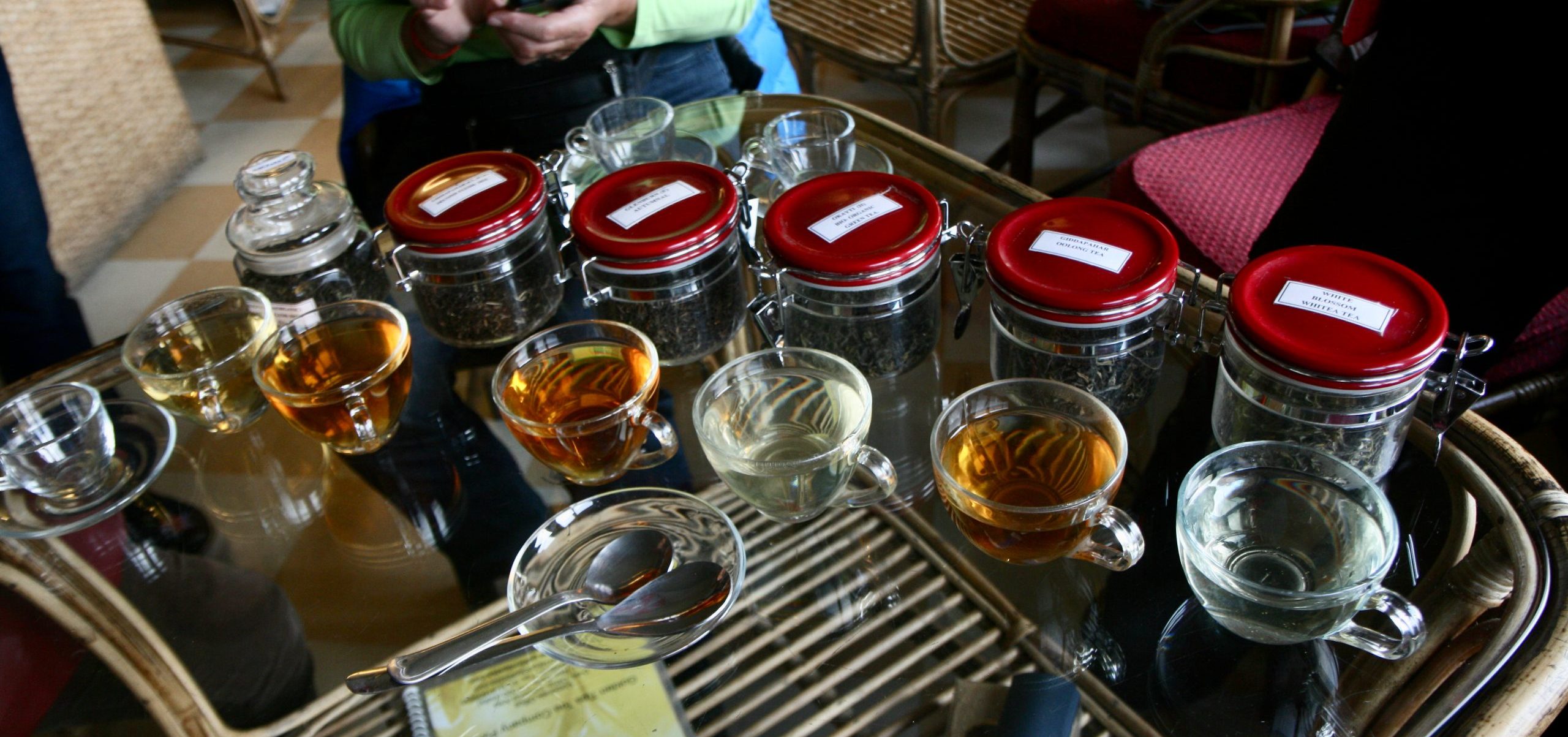EATING AND COOKING
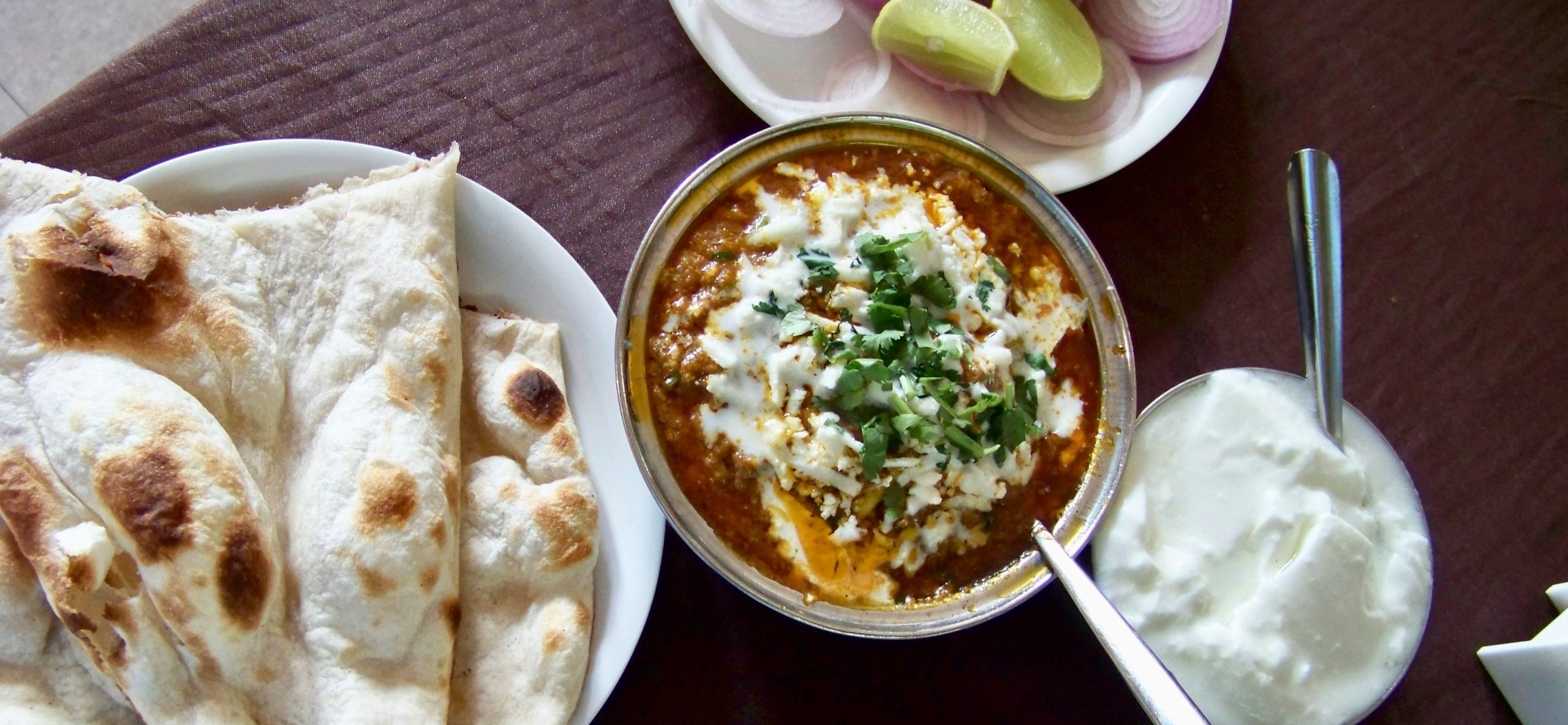
It’s not just the sleeping quarters that ensure daily physical well-being when travelling, but also the food. There are people for whom food intake is not quite so important. Others celebrate the possibility of new taste experiences and restaurant visits when travelling. A cooking class is not only a good idea for learning new specialities but also a good opportunity to do something together and learn more about people.
India
Food is very important to Indians. It is customary to eat hot food three times a day, but often later than we are used to at home. Every state, every region, every family has its own speciality recipes. It would be pointless to list the different cuisines here. Generally speaking, the use of spices is very varied, rice is eaten more in the south, bread in the north, there are very spicy dishes and in some restaurants it is possible to get a milder version. In the better accommodation you can try out the buffet, many restaurants offer thali. Thalis are plates/platters with a combination of usually a curry, a dal, rice, chapati and various small items such as chutneys, curd, sweets etc. In cheap dhabas, you can get as many servings as you like, vegetarians are delighted with the wide variety of dishes, but meat fans don’t go away empty-handed either.
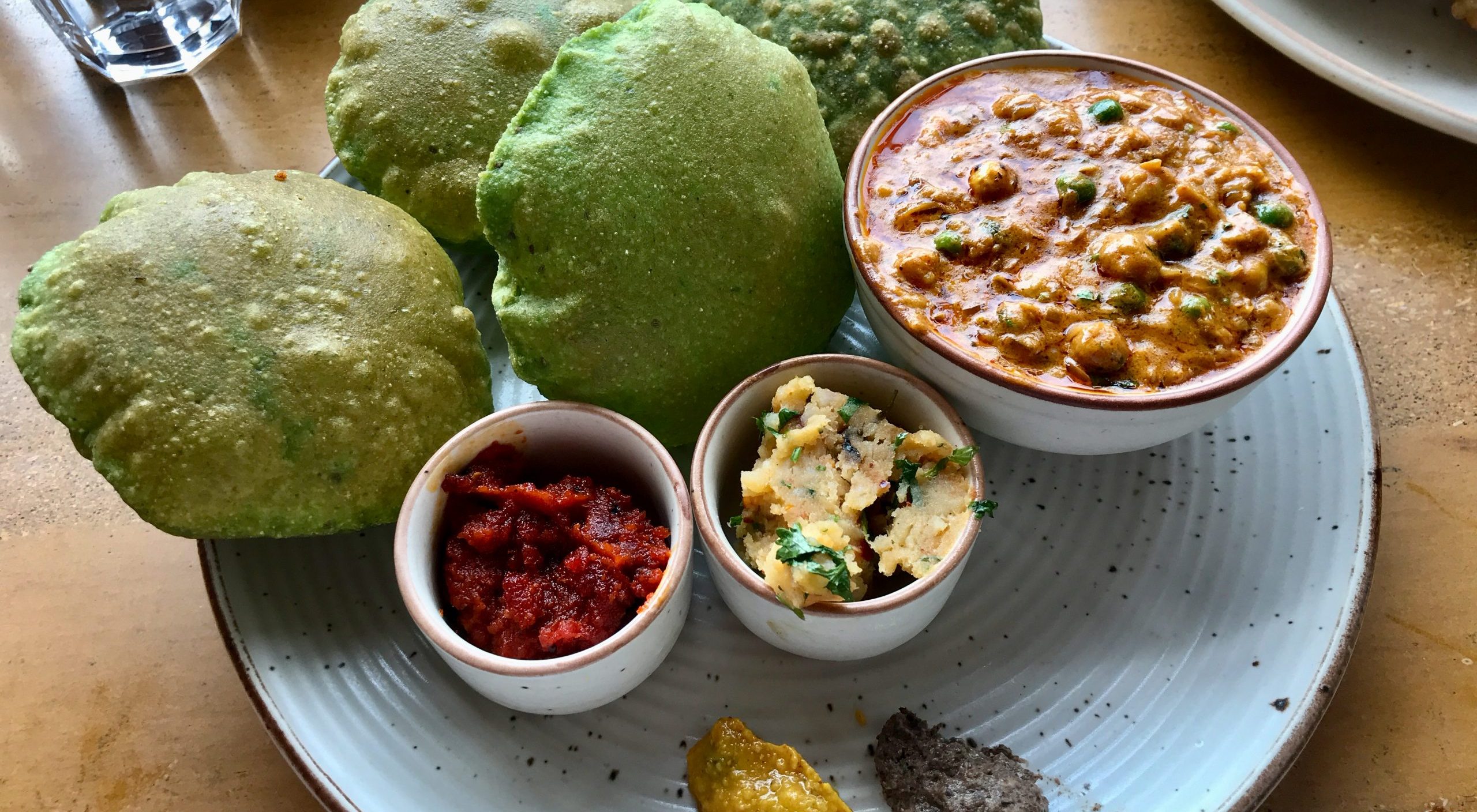
Nepal
If you ask travellers from Nepal about the food there, there is usually only one answer accompanied by a smile: Dal Bhat. It is usually a combination of rice, a lentil dish and a vegetable curry. It is very popular for dinner on trekking tours in the lodges – especially as the price includes being refilled as often as you like. There are different types of lentils, different vegetables and it always tastes different due to the different spices used. Nepal also has other specialities to offer. It can sometimes be a little spicy. Eating a vegetarian diet is very easy.
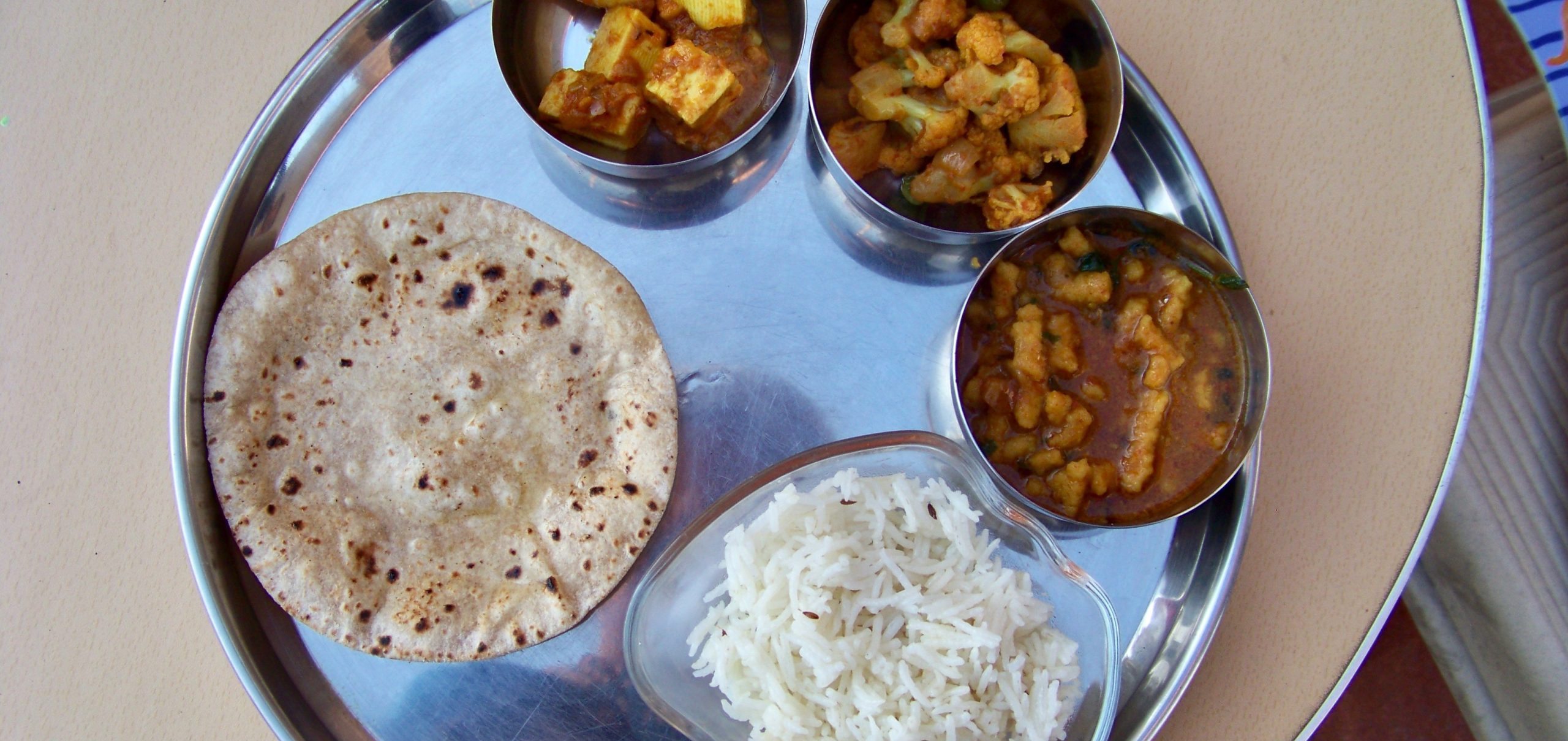
Georgia, Armenia, Kyrgyzstan
The post-Soviet countries each have their own cuisine with delicious specialities, but also various Russian influences. In Georgia, the food culture plays an even more special role with the supras, i.e. communal “feasts” that last for hours, where the table bends under different dishes and there is a table master who takes care of the toasts. The dishes are more meat-heavy than in India, especially in the nomadic culture of Kyrgyzstan. But it is also possible to travel vegetarian. In all three countries, it can be said that it tastes best “at home”, i.e. the meals prepared by families in homestays and smaller guesthouses are the best.
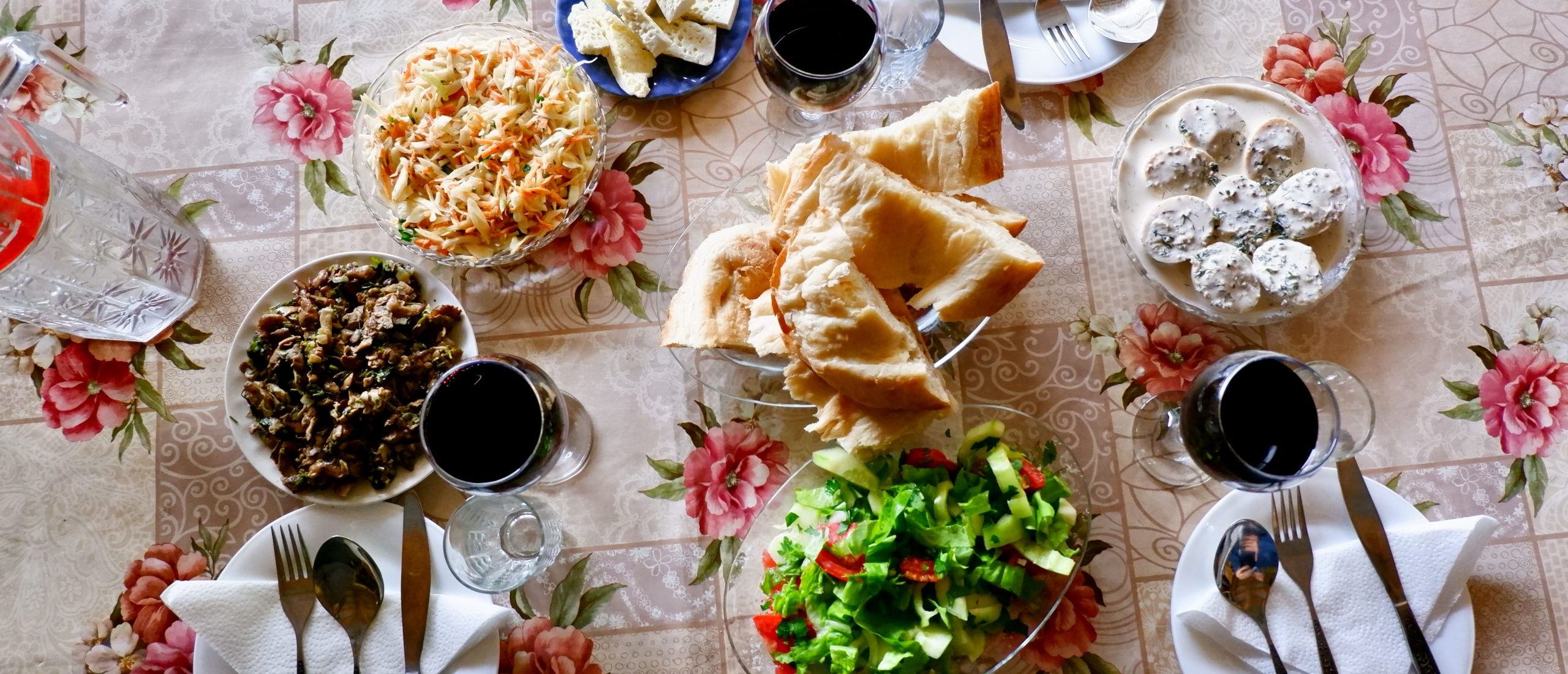
Do it yourself: Cooking
Cooking together is a wonderful experience, doing things together, interesting conversations and a delicious result make us like to include cooking classes in our tour plans. These take place in a variety of ways – from professional providers offering well thought-out dishes with recipes to private households, even in small village huts, where cooking is done “by feel” and you have to write down the recipes yourself. The cooking together is often accompanied by a lot of laughter – getting round chapatis right away is just as difficult as folding beautifully shaped momos. The results often look funny. If you would like to learn special dishes, please let us know and we will try to make it possible!
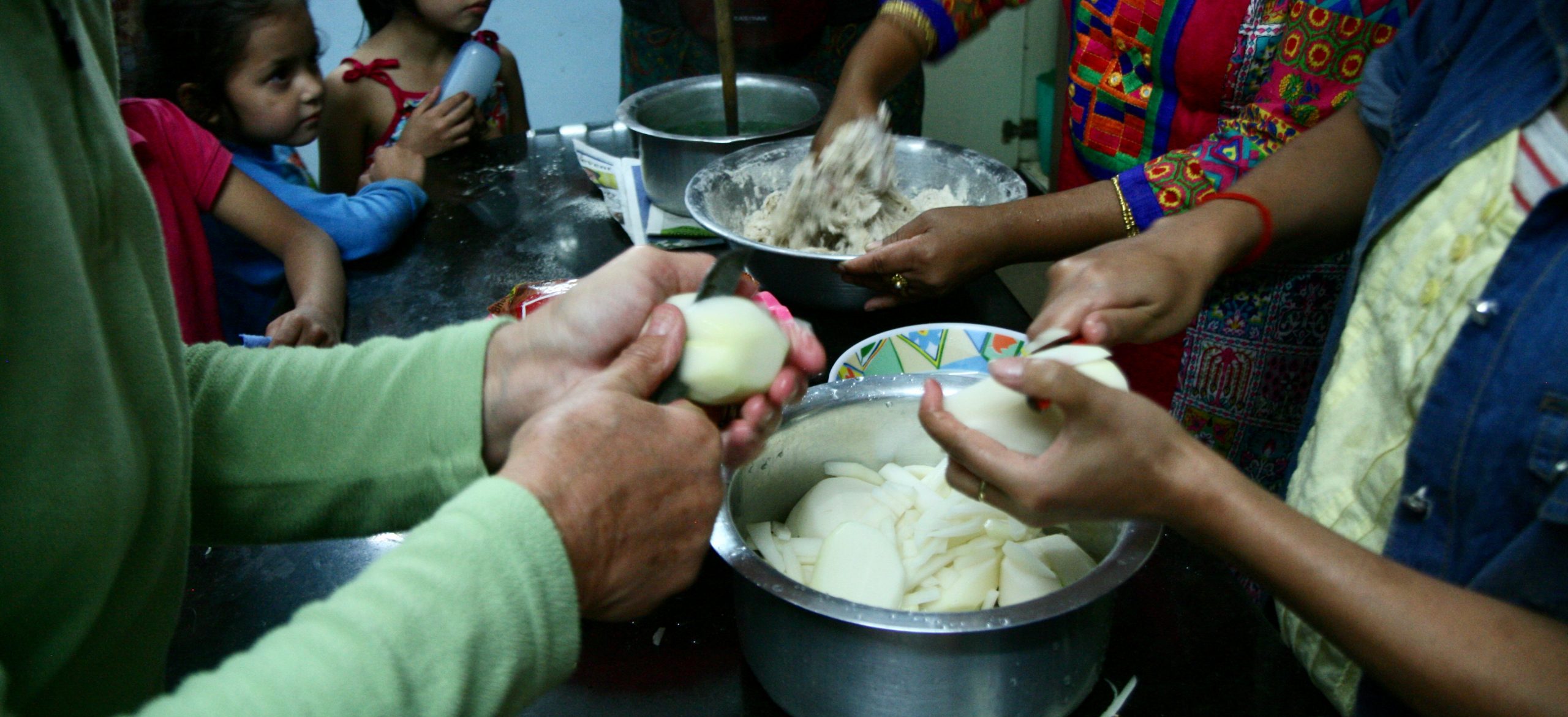
Eating Experience
In India, a lot of food is eaten by hand. Folding chapati in such a way that as much curry as possible can be loaded onto it or manoeuvring a rice mixture into the mouth in an orderly way can be learned. Even if it is unfamiliar at first not to have cutlery between your hand and the food, it is a special experience that could be tried out. And how is khinkali eaten properly? Eating habits with a certain set of rules are also often different to those at home – it’s very exciting to discover the differences. In general, a shared local dining experience is an enriching experience. What’s on the table, how do you take/get your food filled, how do you start, is there a prayer beforehand, who eats together, do you sit at the table or on the floor – so many aspects that you can experience when travelling.
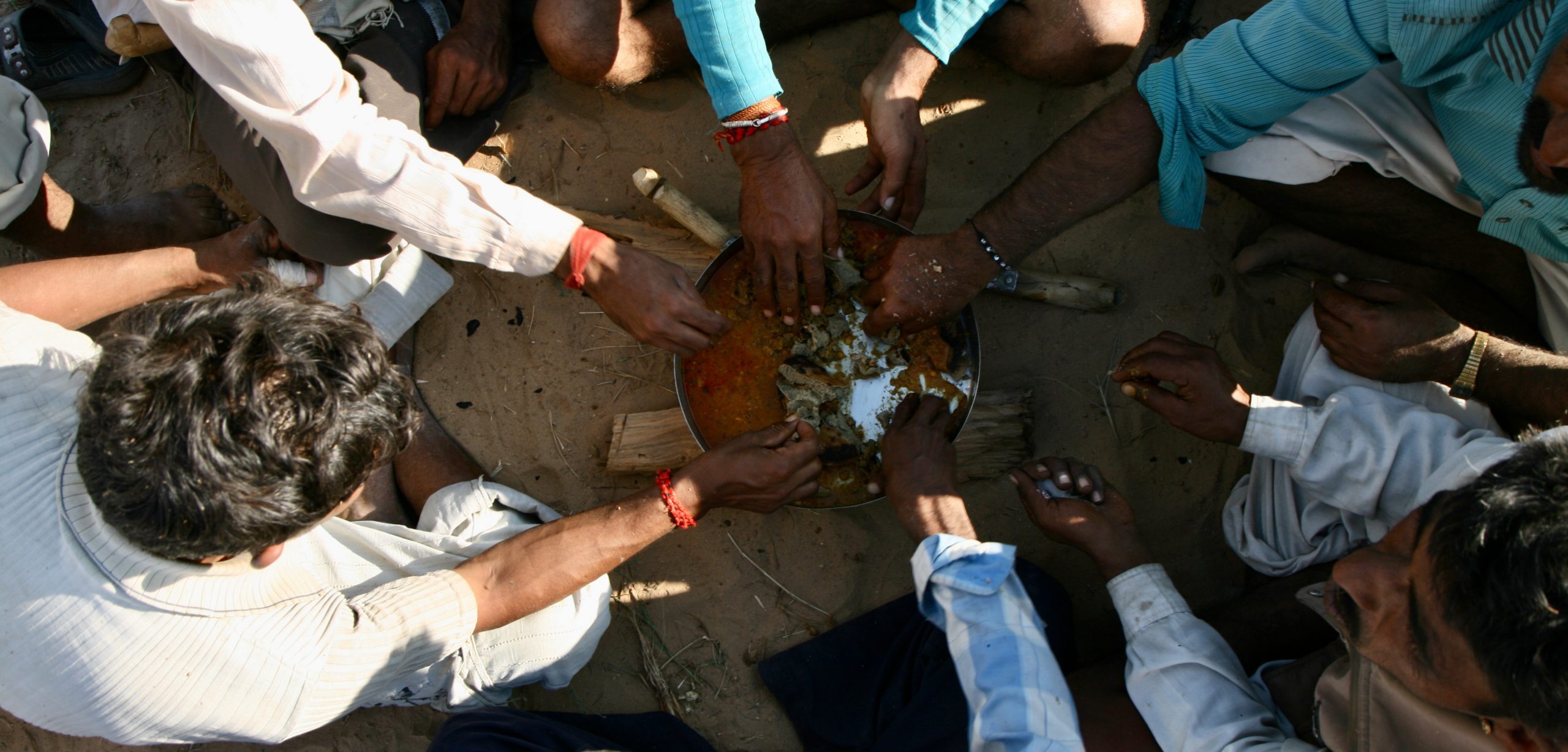
Something Sweet: Mithai
It’s incredible what different sweets you can make with sugar and milk. There are shops all over India that have a selection of these fresh treats on display. In some cases, you can even watch them being made right next door. These sweets are very filling. If you still want to try lots of them, it’s best to get together, order one of each and cut them up into mini portions. Then find a nice place to sit, forget about the calories and enjoy the sweet temptations – bon appétit!
The post-Soviet destinations tend to impress with delicious cakes or large sheet cakes. Here, too, it is worth visiting a bakery or café and we recommend ordering together with forks for everyone to enjoy a particularly rich flavour experience without your belly being too full from just one slice. Medovnik (honey cake) is a speciality that is offered in all three countries.
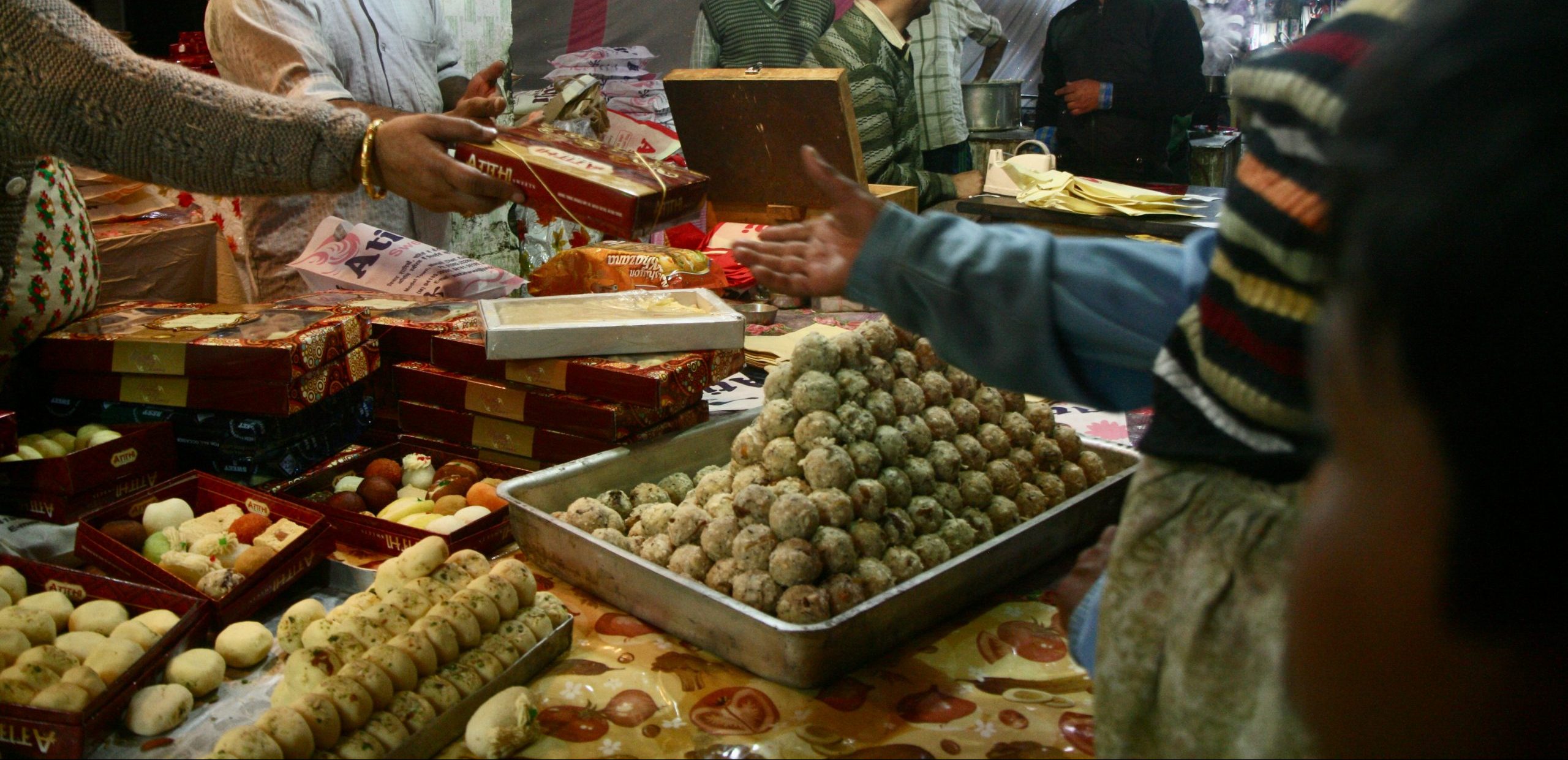
Spices
A lot of spices grow in India. On the one hand, you get to know some of them in the cookery course, on the other hand you can discover more at the markets – or you can visit a spice plantation directly, e.g. in Goa or Kerala, where you can see directly what the spice looks like on the plant. Many spices also have effects that can be learnt here. This plays a major role in Ayurvedic cuisine.
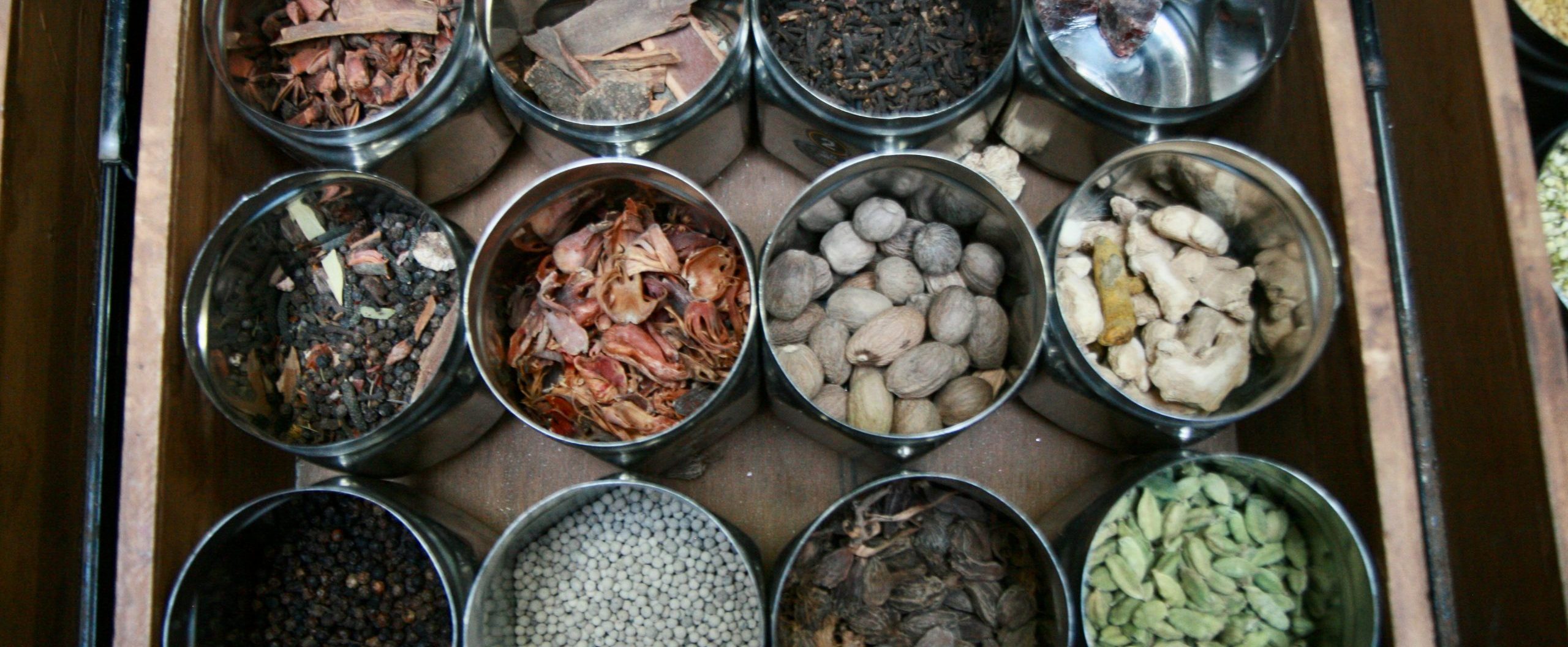
Tea/Chai
Indians love their hot sweet tea (chai) by the roadside. There are small tea stalls everywhere that will quickly brew you a fresh cup of tea. Have you ever got up at dawn and snuck out of your hotel to watch the city wake up with a hot chai in your hand? Savour this special atmosphere on your trip!
India is also home to various tea-growing regions. Here you can experience a tea tasting: different varieties are prepared and you can taste everything with spoons. It is very interesting to see how the different tea flavours unfold on the tongue and palate. Perhaps you will discover your new favourite tea here? Of course, the teas can also be purchased afterwards.
